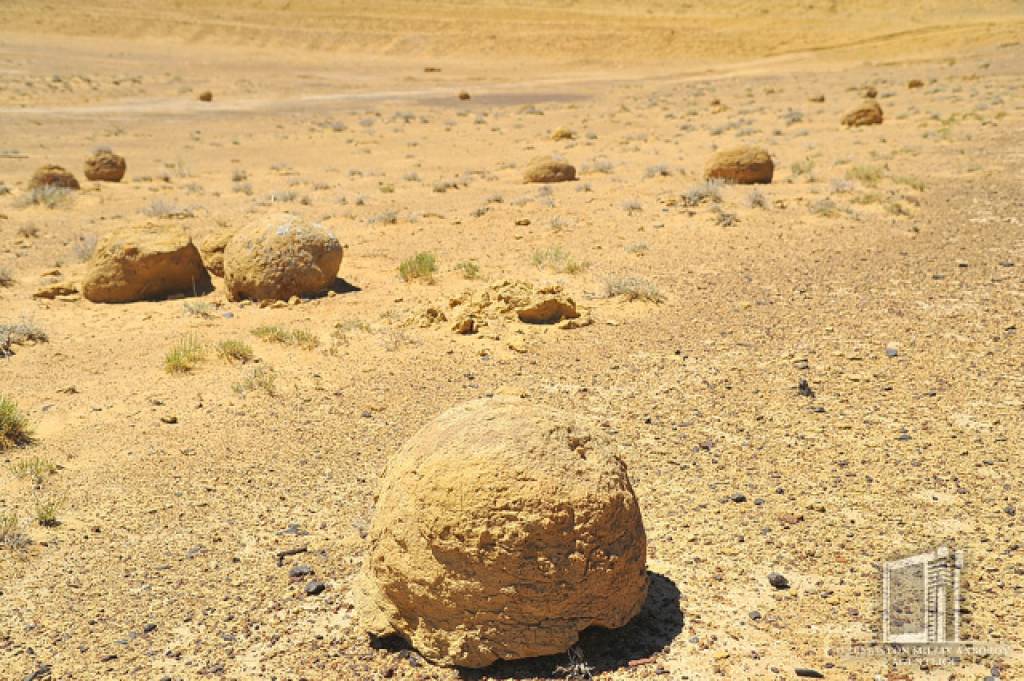Amudarya “monuments” won’t leave any tourist indifferent

Hundreds of spherical boulders can be found along Guzar – Bukhara – Nukus – Beineu highway, passing through Amudarya district of the Republic of Karakalpakstan.
Hundreds of spherical boulders can be found along Guzar – Bukhara – Nukus – Beineu highway, passing through Amudarya district of the Republic of Karakalpakstan.
The spherical stones, called scientifically boulders of Moeraki, from a geological point of view are a combination of mineral salts of calcium and clay. Hundreds of tourists come here every year to see them.
These boulders remained in memory of Tethys Ocean. Millions of years ago, the diameter of these stones was 2 – 2.5 meters. Over time, they collapsed, their shell exfoliated. Now the diameter of the stones is on average 0.3 – 0.5 meters. Such spherical boulders can be found on the islands of New Zealand, in Australia and the Republic of Kazakhstan.








